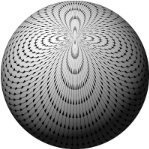

hoola
Senior Members-
Posts
1063 -
Joined
-
Last visited
About hoola
- Birthday 06/17/1951
Profile Information
-
Location
colorado, usa
-
Interests
electronics, music, theoretical physics, philosophy, politics
-
College Major/Degree
none
-
Favorite Area of Science
physics
-
Biography
retired electronics technician, antique/vintage electronics collector
-
Occupation
none/ recycling center volunteer
hoola's Achievements

Organism (8/13)
15
Reputation
-
no prob and thank you
-
in an essentially infinite universe, with a finite time of anything material or energetic to reach into what must be a much larger volume, does this not affect the consideration that the "bulk" universe is isotropic when considering most of space is empty, hiding behind a light speed horizon?.
-
it seems that there is a long standing issue with the architecture of the universe. It is stated that (IF) there was a BB, there was a certain point where everything started. This argues against isotropic distribution of the mass contained within it. In addition to the mass towards the center point of the BB, there is also the shell material that flowed in the opposite direction of the BB from our perspective, adding to the overall mass red shift of our observations from webb. When one considers the issues surrounding isotropic evidence, shouldn't one take into account the empty space that material has yet had time to invade? If one considers that this yet occupied is part of the universe, and if that space surrounding the occupied shell is infinite, or nearly so, then the universe is isotropic only when considering how it appears from inside it.
-
the mechanism of the apparent age increase may be that light coming from the early universe is coming from a region with much more mass. Our observations of that light is from a region of much less mass, given that the universe's expansion is continuous, and started from a certain region, it follows that there is more mass towards the origin region than away from it. This would be true to any observer at great distance from the origin source. This seems the mass differential to explain the exaggerated webb age findings. IOW, there is simply more mass facing the observer (webb) than behind it red shifting the readings, and not "tired light".
-

Cosmic Megastructure Challenges Theories of the Universe
hoola replied to Alex_Krycek's topic in Science News
I meant, given the size of the universe, a structure of such anomalous proportions may be inevitable to happen and still be a random occurrence. -

Cosmic Megastructure Challenges Theories of the Universe
hoola replied to Alex_Krycek's topic in Science News
in a universe this big, could not the structure be of a statistical occurrence at least once within our light cone? -
since pi appears in many formulae and seemingly random physical events, could it prevalence be derived as it is the endless number generator that describes the circle, and so a fundamental property of the spherical singularity at the birth of the universe? This would infer pi as a major building block of the geometric universe, hence it's prominent position.
-
Tegmark, Wheeler, Pythagoras. In a certain sense, did he not say that with the incompletnes?
-
If the universe came about by mathematical calculations, perhaps a mistake was made in these calculations since math is somewhat unstable (Godel), leading to this issue.
-
it seems that if the universe formed both types, then due to random fluctuations within the forming process, more of one should have been created than the other. The bulk that annialation could have been what powered the big bang. It was arbitrary which one persisted to be called "matter".
-
Experimenters can entangle particle pairs and hold them in isolation at remote positions and not observe collapse for an arbitrary time. Can a remote positioning of entangled particles exist in a natural sense? Does the universe, as an observer, have a plank level collapse period that would prevent any pairs from attaining any real distance from each other before collapse? I see this question arising from the instantaneous collapse of virtual particle pairs in space, and wonder if there is no "distant" collapse possible without a deliberate act of a particular experimenter's intentions.
-
what about virtual particle pairs, appearing as "the flux". If they manifest as tiny exclusion zones, wouldn't photons have to deviate around them, causing a physical extension of the true distance between points, due to these path deviations that become more than trivial when considered in vast distance?
-
or the same thing with dark matter for the culprit. Until we know more about either, can they be ruled out? Could it be the underlying mechanism of one or both functions?
-
What if dark energy is the overall reaction mechanism to a light beam? By adding a plank level viscosity to space proportional to distance ^2.




